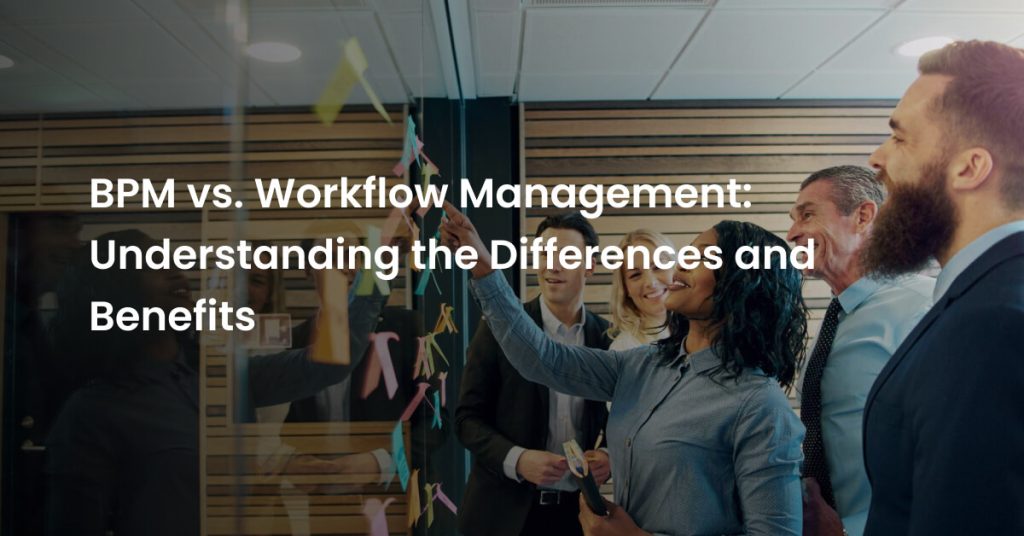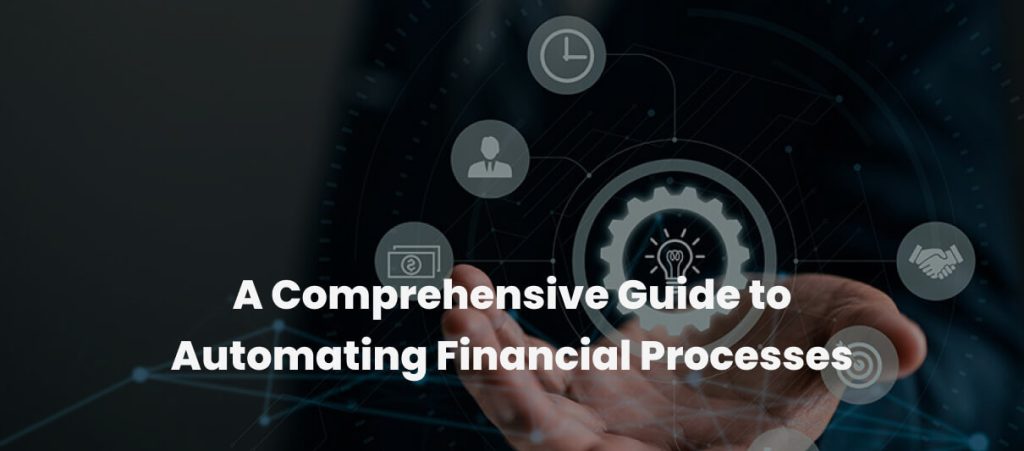Streamline your Business Workflows with BPM Solutions


Business Process Management (BPM) is a systematic approach to improving an organization’s workflow and processes. It involves analyzing, designing, implementing, and continuously optimizing business processes for greater efficiency, productivity, and agility. BPM aims to align business processes with the organization’s strategic goals, enhance customer satisfaction, and drive innovation. It often involves using technology to automate and streamline processes, but it also emphasizes the importance of people and their roles in executing and managing these processes. Overall, BPM helps organizations to be more responsive to change, adapt to market dynamics, and improve overall performance.
SquareOne helps enterprises tackle BPM challenges by providing a user-friendly platform to map out, automate, and optimize their processes. With us, organizations can easily identify bottlenecks, streamline workflows, and improve overall efficiency, ultimately leading to better business outcomes.
Why Every Business Needs BPM for Growth and Agility
Business Process Management (BPM) software plays a crucial role in enhancing operational efficiency for companies and consistently supporting their business transformation. It aids in eradicating inefficient processes that consume time and money by pinpointing bottlenecks and complexities and aligning operations with customers’ requirements. Through business process automation, organizations enhance their efficiency by minimizing manual bottlenecks.
Which One Suits your Business?

Human-Centric BPM
Our software provides intuitive interfaces and workflow management tools that empower users to manage tasks, collaborate, and make informed decisions quickly. We enable the automation of repetitive tasks, freeing up time for employees to focus on more strategic and value-added activities.

Integration-Centric BPM
With our platform, organizations can seamlessly integrate disparate systems and applications, ensuring smooth data exchange and process automation. We offer robust APIs and integration capabilities, allowing

Document-Centric BPM
Our solution simplifies document management by digitizing and automating document-related processes. We want businesses to leverage existing investments in technology and infrastructure.ffer features such as document capture, storage, version control, and approval workflows, helping organizations reduce paperwork, improve document accuracy, and ensure compliance with regulatory requirements.
Our Business Process Management Steps

Planning
We assist in defining clear objectives and key performance indicators (KPIs) to align business processes with organizational goals. We also help identify the process and establish a roadmap for implementation.

Implementation
We support the deployment of optimized processes, ensuring a smooth transition from old to new workflows. We provide automation capabilities to reduce manual effort and improve efficiency.

Optimize
Continuous improvement is at the core of our BPM approach. We facilitate ongoing optimization by analyzing process data, soliciting feedback from stakeholders, and implementing changes to enhance efficiency and effectiveness

Modeling
Our platform allows for the visual representation of business processes through modeling. This step enables stakeholders to understand the flow of operations, identify bottlenecks, and simulate changes before implementation.

Monitor
We provide real-time visibility into process performance. We offer dashboards and reports that track KPIs, identify deviations from the desired outcomes, and highlight areas for improvement.
Best Practices in Business Process Management
Organizational transformation must be based on results
For any change to occur in a company, there must be a performance analysis. There ought to be a reason behind everything we do, and measuring lets us know if our deeds align with those reasons.
If we want to know the whole story, we can only rely on retrospective reporting rather than predictive metrics. Deconstructing overarching goals into people’s day-to-day actions requires a linked measuring system. Management shouldn’t depend just on intended results; performance measurements should be used to express strategy and goals effectively.
Segment the company according to its business processes
It is reasonable to consider the process as the principal method of segmentation inside and, more often than not, across enterprises due to the inaction caused by management structures with overly strict planning procedures. Reorganizing operational units alone will not achieve the desired level of seamless cross-functional integration.
Only processes can boast of having accomplished enterprise
Wide integration, as they start with the first triggering event that initiates the activity and continues until the value outputs are given to the right stakeholders. This event/outcome coupling defines our procedures. All supplementary frameworks should serve to bolster the process as a whole and, by extension, to benefit stakeholders.
Change in the company centered on stakeholders
A stakeholder is an individual or organization that cares about, or could care less about, the success of a company. The specific needs and handling of each type dictate how best to classify them.
To fully grasp each stakeholder group, we must first be familiar with our present and desired connection with that group. We will be driven to make changes by the disparity between these two states, and we will balance the criteria for stakeholders according to their real demands.
Involve the general public in company transformation
No BPM project can be considered complete without first identifying and analyzing internal obstacles. People are often disregarded when people are talking about business process operations. By taking into account potential solutions to their issues during strategy development, you may increase the likelihood that things will run smoothly once the process is operational.
In addition to your communications strategy, you should back changes with clear assignments, well-defined processes, opportunities for growth, incentives for good performance, acknowledgment for achievements, and a concerted effort to hold everyone accountable. Throughout the change, employees need to have faith that reliable communication is occurring. Their involvement should make them feel like they made a difference.
Process renewal projects that are iterative and have time constraints
People don’t know everything at once; therefore, it’s important to create a space where they may learn and grow in their abilities to improve business performance. The premise of this iterative approach is that before diving into the nitty-gritty, you should make some modifications at a high level of abstraction.
In time-boxing, the quantity of work that gets done depends on how much can be accomplished in the given time, and the activity schedule needs to be planned ahead of time. One of the major challenges in process-oriented change scenarios is scheduling the participants, especially process management, for crucial reviews. This issue is also overcome.
Employ the black-box technique
Organizations and procedures should use the black-box technique. In order to understand how each process interacts with its internal and external stakeholders, we shall examine them separately. In order to examine each process, we will first break it down into its component parts.
Doing so will ensure that our analysis and design are as detailed as they should be. We won’t cover every detail, but rather the crucial ones. We will have the essential knowledge and understand the drivers before moving on.
Ready to take your business to the next level?
Seamlessly Integrate with your Essential Apps and Services
We specialize in providing seamless integrations with a wide range of apps and services, ensuring that you can effortlessly connect our platform with your existing tools and systems. Our integration process is designed to be user-friendly and efficient, allowing you to quickly set up and start using the integrated services without any hassle. Whether you need to connect with popular apps or custom services, we offer flexible and customizable integration options to meet your specific needs. With real-time data syncing and continuous support from our team, you can rely on our integrations to streamline your workflows and enhance productivity. Our platform serves as a comprehensive business application platform, enabling you to seamlessly integrate with other tools and systems to enhance your overall business operations.

Benefits of Incorporating Business Process Management

Visibility
Business Process Management (BPM) provides valuable insights into how your operations deliver products or services. In recent years, companies have begun using process mining to uncover how their processes are executed, identifying deviations by comparing actual practices with planned models. This approach enables you to see the actual actions of people and systems rather than relying on assumptions.

Efficiency
A fundamental aspect of BPM is collecting and analyzing data to evaluate process performance. Process mining is essential for pinpointing inefficiencies by examining log files and highlighting areas of rework and bottlenecks. Utilizing a Business Process Management System (BPMS), BPM managers and workers gain a deeper understanding of process performance at each step through dashboards and KPI indicators.

Cost Reductions
Cost reduction is crucial for all organizations, leading to higher profit margins and serving as a key performance indicator for BPM initiatives. To ensure processes contribute to the bottom line, it’s important to identify the total execution and delay costs. Eliminating duplicate processes, valueless methods, or consolidating operations can reduce costs based on a thorough analysis of process efficiency.

Business Agility
Modern BPM platforms enhance an organization’s responsiveness to customer demands. Implementing BPM software can provide the speed and agility to adapt to changing market needs. With a mastery of business processes, companies can quickly identify and address problems, updating processes with minimal downtime. Process simulation helps predict the impact of changes, ensuring the best solutions are adopted.

Customer Experience
A critical consideration in BPM is more than just focusing on process efficiency or cost reduction, which can lead to departments losing sight of the customer experience. To mitigate this, business stakeholders can adopt an outside-in approach, integrating BPM with Customer Journey Mapping. This approach helps understand how customers perceive the value delivered at each step of the process.
Ready to Take your Business to the Next Level?
Why Automate your Business with SquareOne
Automating your business with SquareOne offers numerous benefits, including increased efficiency, reduced errors, and streamlined workflows. By automating repetitive tasks and standardizing processes, we help you save time and resources, allowing your team to focus on more strategic tasks. Additionally, our integration capabilities enable seamless connectivity with other tools and systems, enhancing overall productivity and collaboration. With us, you can optimize your business operations, improve customer satisfaction, and drive growth.

Our Expert Services
Technology Consulting
Our technology consulting services help you align your IT strategies with your business goals, ensuring optimal use of technology to drive growth and efficiency.
Custom Application Development
We specialize in developing custom applications tailored to your specific business needs, helping you automate processes and improve operational efficiency.
Enterprise Application Development
Our enterprise application development services focus on creating scalable and secure applications to support your organization’s complex business processes and workflows.
Data Analytics and Integration
We offer data analytics and integration services to help you gain valuable insights from your data and integrate disparate data sources for a unified view of your business.
CRM
Our customer relationship management (CRM) solutions help you manage and analyze customer interactions and data throughout the customer lifecycle, improving customer satisfaction and retention.
ERP
Our enterprise resource planning (ERP) solutions help you streamline and integrate business processes and data across your organization, improving efficiency and decision-making.
E-commerce
We provide e-commerce solutions to help you build and manage online stores, enabling you to reach a wider audience and drive sales.
Service Management
Our service management solutions help you optimize service delivery processes, improve customer satisfaction, and drive operational efficiency.
Our BPM Partners

IBM Business Process Manager (IBM BPM)
IBM BPM is a comprehensive business process management platform that helps organizations streamline and automate their business processes. It offers tools for process modeling, simulation, execution, monitoring, and optimization, enabling organizations to improve efficiency and agility.
Appian
Appian is a low-code BPM platform that allows organizations to build, deploy, and manage business process applications quickly. It offers features such as process modeling, workflow automation, real-time analytics, and mobile access, helping organizations improve operational efficiency and customer experience.
Pega Platform
Pega Platform is a BPM and case management platform that enables organizations to build and deploy enterprise applications rapidly. It offers tools for process automation, case management, AI-powered decision-making, and customer engagement, helping organizations drive digital transformation and improve business outcomes.
Microsoft Power Automate
Formerly known as Microsoft Flow, Power Automate is a workflow automation tool that integrates with Microsoft Office 365 and other popular applications. It allows users to automate repetitive tasks and streamline business processes, improving productivity and efficiency
Camunda
Camunda is an open-source BPM platform that provides tools for process modeling, execution, and monitoring. It offers flexibility and scalability, making it suitable for both small businesses and large enterprises looking to automate and optimize their business processes.
Nintex
Nintex is a workflow automation platform that allows organizations to automate and optimize their business processes without writing code. It offers tools for process mapping, workflow automation, document generation, and mobile access, helping organizations improve efficiency and productivity.
Testimonials
Contact Us
Take the next step in your digital transformation

Resources

BPM vs. Workflow Management: Understanding the Differences and Benefits
The business environment is grappling with too many technological similarities. We are here to clarify one such similarity between Business Process Management (BPM) and Workflow management. Are you wondering why suddenly such a clarification is needed? Well, it is high time to address the confusion so that organizations can benefit from either of them, which is likely a savior for businesses.

From Paper to Digital – The Journey of Invoice Processing in the Age of Enterprise Information Management
From inception to completion, invoice processing has been a journey of excessive paperwork, error-prone calculations, repetitive manual tasks, and other pointless operations. As an inevitable process in business management, the workflow of invoice processing can neither be overlooked nor ignored. The introduction of Enterprise Information Management (EIM) solutions via digital transformation seemed like a helping hand for organizations struggling with data capture, extraction, and document integration. From streamlining the invoice process to increasing the accuracy of data to enhancing workflow productivity, the digitization of invoice processing proved to be a beneficial add-on to driving organizational success.

RPA in Banking: A Comprehensive Guide to Automating Financial Processes
The landscape of financial services has expanded beyond basic banking operations, providing users with advanced and sophisticated solutions that ease their financial experience. Every service in the banking industry transforms how financial services function, from digital banking to wealth management—all thanks to the rapid adoption and advancements
FAQs
Organizations should implement BPM when they want to streamline their processes, improve efficiency, and align their operations with strategic goals. BPM can help organizations achieve greater agility, adaptability, and customer satisfaction.
Business Process Automation (BPA) refers to the use of technology to automate repetitive, manual tasks within a business process. Business Process Management (BPM), on the other hand, is a holistic approach to managing and improving processes, which includes analysis, design, implementation, monitoring, and optimization. BPM encompasses automation as one of its components but also focuses on process improvement and alignment with business goals.
BPM can help manage cloud resources by providing tools for modeling, monitoring, and optimizing cloud-based processes. It can help organizations ensure that their cloud resources are used efficiently, optimize costs, and services delivered effectively to users.
BPM and automation work together by using BPM principles to analyze, design, and optimize processes and automation technology to execute those processes efficiently. BPM provides the framework and strategy, while automation tools and technologies enable the actual execution and control of processes.
BPM can help overcome challenges such as inefficiency, lack of visibility, poor coordination, and compliance issues. By streamlining processes, improving visibility, and enhancing collaboration, BPM can help organizations operate more effectively and quickly adapt to change.
Business process automation software is a type of software that helps automate repetitive, manual tasks within business processes. It can streamline workflows, reduce errors, and improve efficiency by replacing manual tasks with automated ones.
Business Process Automation (BPA) focuses on automating all business processes, including manual and automated tasks. Robotic Process Automation (RPA), on the other hand, focuses specifically on automating repetitive, rule-based tasks performed by software robots or “bots.”
Any repetitive, rule-based, and manual task within a business process can be automated. Examples include data entry, invoice processing, order fulfillment, and customer service interactions.
- With a business process automation platform, you can:
- Stay on top of your tasks by automating reminders and notifications.
- Get approvals on the go by automating approval workflows.
- Automate processes to reduce manual effort and improve efficiency.
- Multitask with ease by automating repetitive tasks.
- Get real-time visibility into process performance and bottlenecks.
- Carry out global transactions efficiently and securely.
When choosing a business process automation software, you should look for features like ease of use, scalability, integration capabilities, workflow automation, analytics, and reporting. It’s also important to consider the vendor’s reputation, customer support, and pricing model.
Low code / no code process automation platforms allow non-technical users to create and deploy automated processes quickly and easily. They offer advantages such as faster time to market, reduced development costs, and greater agility in responding to business needs.












